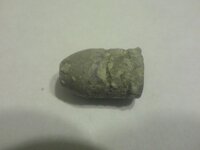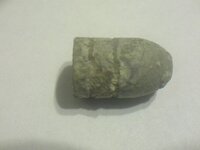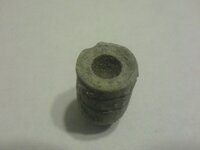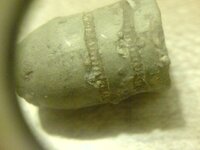I've been reloading and casting for 25 years but this one has me stumped. I found two of these bullets today. The site was once a homesite but is nothing but pasture now. It dates from the mid-late 1800's. The bullets don't appear to me to be that old though.
It's hard to see in the pictures but they have corrosion spots similar to a zinc penny. They're a harder alloy than pure lead as well. There is a hollow cavity in the bottom. It seems too small to be there for the purpose of "bump up".
My first thought was 45 Colt although they don't match any I've seen.
The profile is round nose flat point
Weight 242.3, 242.4 grains
Diameter .457
OAL .713
The weapon had a left hand twist.
Any ideas?
It's hard to see in the pictures but they have corrosion spots similar to a zinc penny. They're a harder alloy than pure lead as well. There is a hollow cavity in the bottom. It seems too small to be there for the purpose of "bump up".
My first thought was 45 Colt although they don't match any I've seen.
The profile is round nose flat point
Weight 242.3, 242.4 grains
Diameter .457
OAL .713
The weapon had a left hand twist.
Any ideas?








